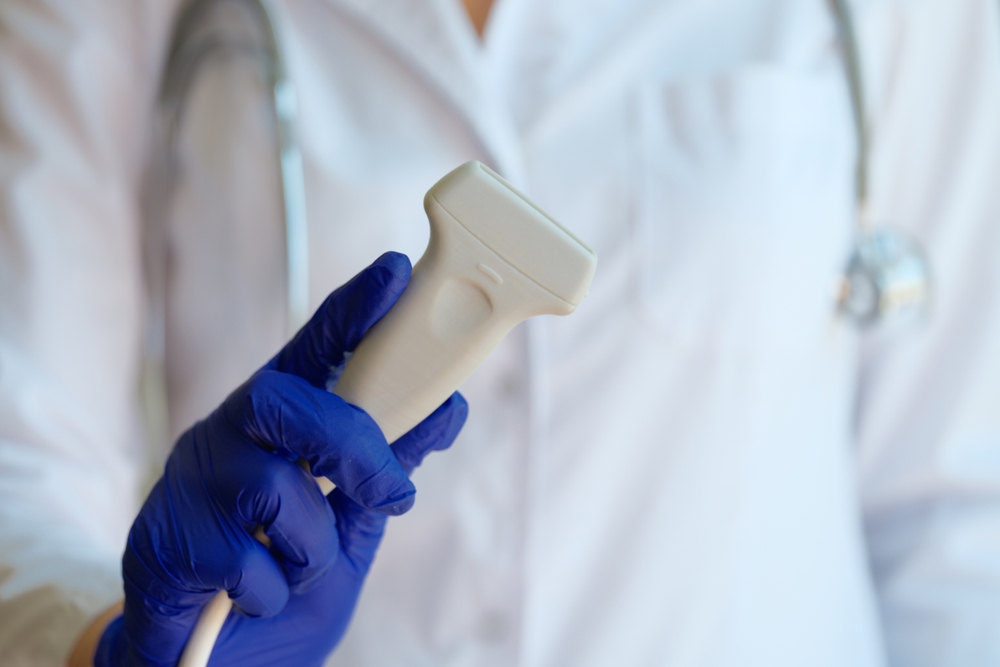Ergonomics in Ultrasound Device Design
 When it comes to ultrasound scans, image fidelity is paramount. While ultrasound clarity has improved by leaps and bounds over the last few decades, not all progress can be attributed to better transducer materials and wave propagation innovations.
When it comes to ultrasound scans, image fidelity is paramount. While ultrasound clarity has improved by leaps and bounds over the last few decades, not all progress can be attributed to better transducer materials and wave propagation innovations.
An often overlooked area of innovation comes in the form of ultrasound ergonomics. Better form-factor design is making it easier for diagnosticians to handle probes and get the best possible scans. In fact, ergonomic ultrasound device design is ushering in a new era of usability and making ultrasound more accessible than ever.
Ergonomics and clinician health
On the surface, ultrasound imaging and technology seems like a generally simple and unencumbered task. Yet as diagnosticians can attest, many unseen challenges accompany regular ultrasound scanning.
- RSIs: Operating ultrasound devices often involves repetitive, sustained movements, which can contribute to a risk of repetitive strain injuries (RSIs). Ultrasound practitioners frequently perform tasks such as scanning, adjusting controls, and maintaining a specific posture for extended periods, which can lead to strains and injuries in muscles and tendons.
- MSDs: The stillness and angled postures required during scanning sessions can also contribute to discomfort and pain in the neck, shoulders, back, and wrists. As a result, prolonged use of ultrasound devices has been linked to the development of musculoskeletal disorders (MSDs).
Clinicians facing ergonomic difficulties like these may be more likely to consider job changes or early retirement due to physical discomfort or stress. RSIs and MSDs can also affect job performance, which consequently affects the integrity of diagnostic scans and the data they yield.
 Impact on patient care and diagnostic accuracy
Impact on patient care and diagnostic accuracy
Well-designed ultrasound devices have immense potential to improve not only the well-being of diagnosticians, but also the efficacy of their work and the patient experience they can provide:
- Clinician well-being: Ergonomic form factors consider the placement of controls, the weight and balance of the equipment, and the adjustability of the workstation to minimize physical strain. By mitigating fatigue, clinicians can maintain consistent scanning techniques and achieve more reliable diagnostic results.
- Diagnostic accuracy: Comfortable hand positioning and appropriate equipment weight distribution reduces the likelihood of tremors or involuntary movements that could compromise the quality of the acquired images. A comfortable, well-designed workspace also contributes to enhanced clarity and resolution by optimizing transducer positioning and enabling more consistent scanning techniques.
- Patient experience: An efficient, ergonomic ultrasound probe design allows for quicker and more precise examinations, reducing the time required for adjustments or retakes. Shorter scan times enhance overall workflow efficiency, minimizing patient discomfort.
Ergonomically designed ultrasound devices even facilitate better communication between clinicians and patients during examinations. When operators are comfortable and can focus on their interactions with patients — rather than managing ergonomic challenges — they’re better able to personalize treatment and elevate overall patient care.
 Innovation in ultrasound probe design for ergonomics
Innovation in ultrasound probe design for ergonomics
To design highly ergonomic probes, engineers must first understand the fundamental processes for administering ultrasound scans, for both clinicians and patients. Current trends in ultrasound probe design include:
- Advanced material quality: Advances in materials and manufacturing technologies allow for the creation of smaller and lighter probes, reducing the physical strain on operators during prolonged use. Innovations in handle shapes, textures, and materials contribute to a more comfortable and secure grip, ensuring clinicians can maintain control over the probe with minimal effort.
- Interface improvements: Modern ultrasound probe designs also incorporate advancements in user interfaces and control panels. Touchscreens, intuitive menus, and customizable settings contribute to a more user-friendly experience.
- Technological advancements: Integration of AI and ML technologies is a significant innovation in ultrasound probe design. AI algorithms can assist in real-time image analysis, automating routine tasks, and providing decision support. This enhances diagnostic accuracy and reduces the cognitive load on clinicians.
To achieve these goals, manufacturers conduct rigorous testing with end users to evaluate device ergonomics. This involves assessing factors such as ease of use, comfort during operation, and the overall user experience.
Building a new generation of ultrasound probes
From minimizing the physical toll on healthcare professionals to enhancing diagnostic precision and patient experience, ergonomics continues to be a focus in ultrasound innovation. As ultrasound becomes an essential tool in internal medicine, advancements in user-centric design will continue to offer better outcomes for everyone this technology touches.

 Impact on patient care and diagnostic accuracy
Impact on patient care and diagnostic accuracy Innovation in ultrasound probe design for ergonomics
Innovation in ultrasound probe design for ergonomics